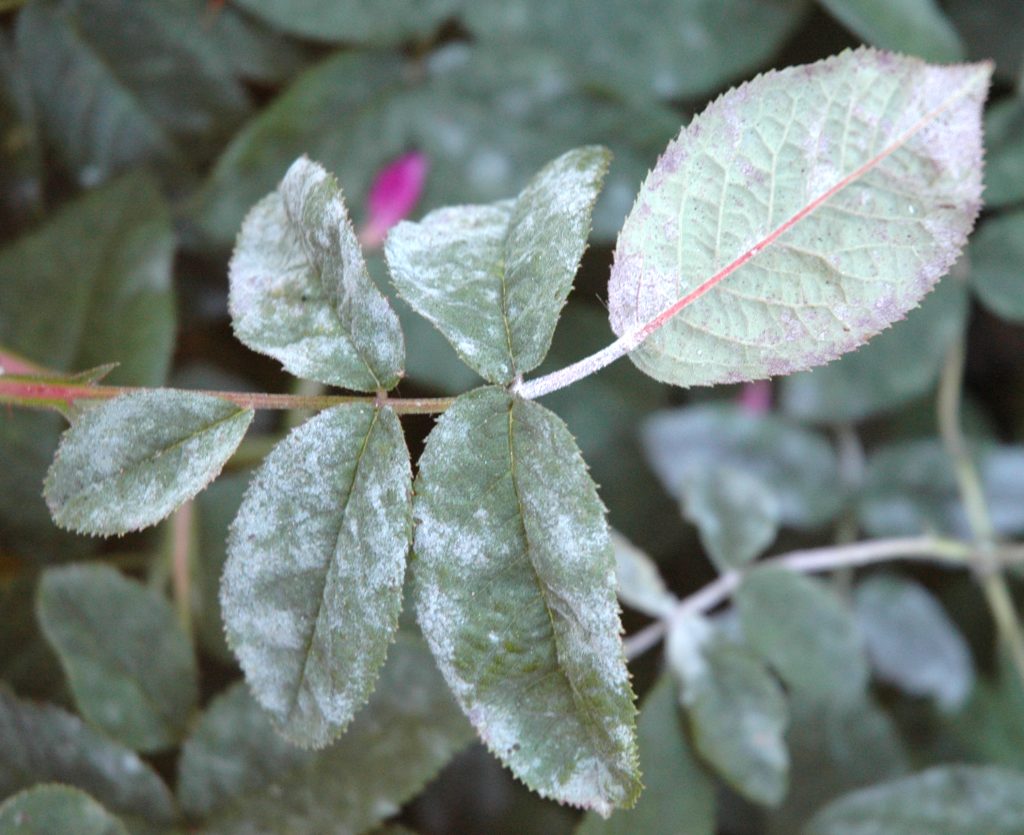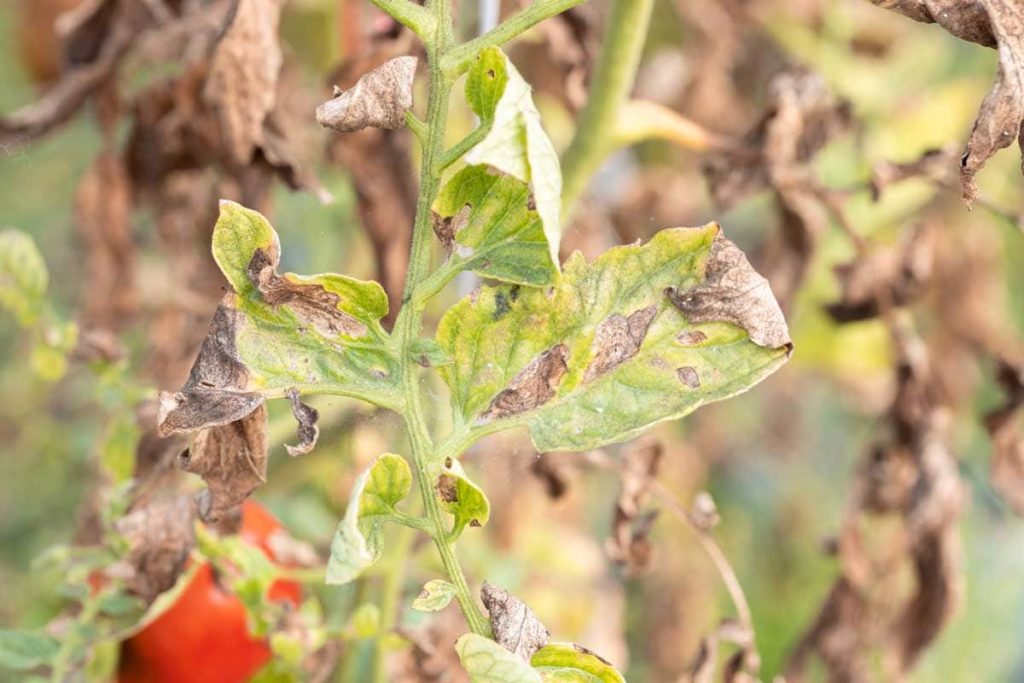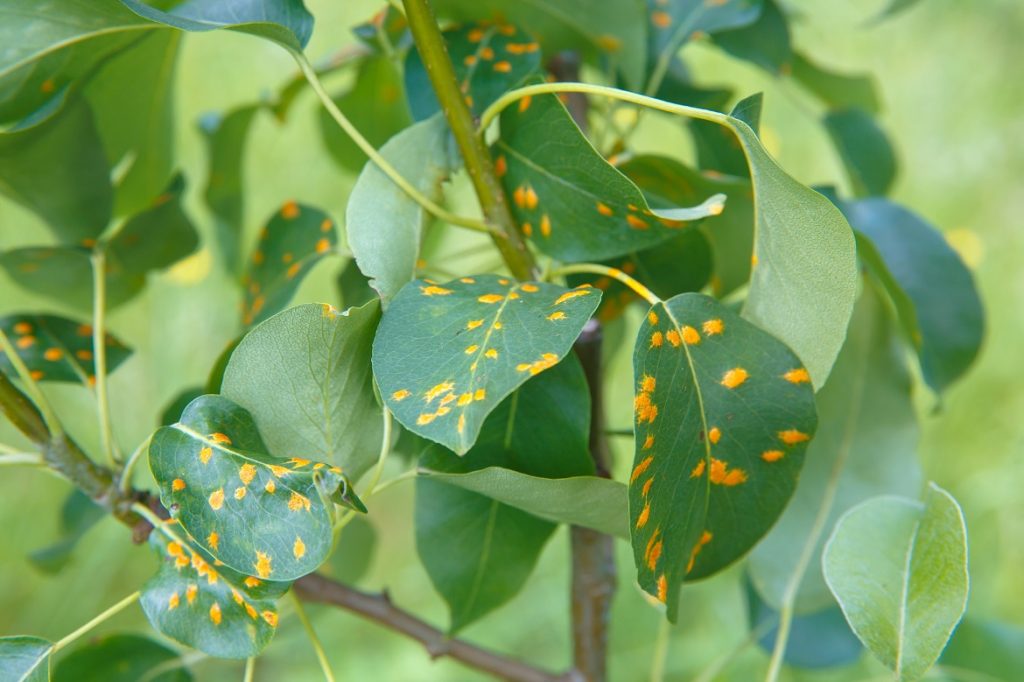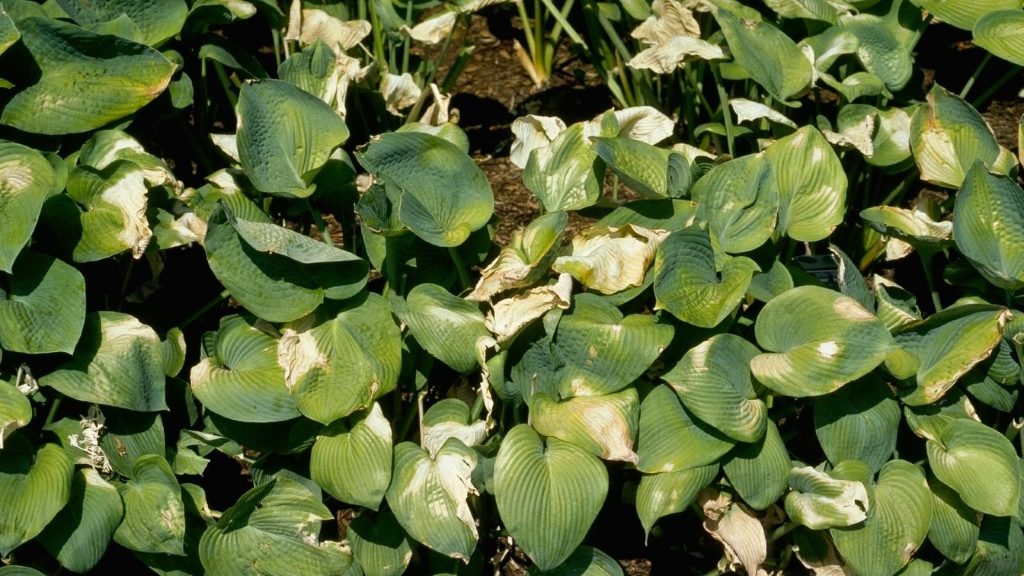Our Approach to Disease Prevention
Chip-N-Dale’s Landscaping takes a proactive, comprehensive approach toward disease and fungi control in landscapes. As part of our preventative measures, we implement fungicide applications during appropriate times, targeting susceptible plants to protect them from potential fungal infections. By promptly noticing symptoms like leaf spots or unusual discoloration, we can quickly identify potential problems and take timely action. Regularly removing dead plant debris, pruning infected plant parts, and sterilizing cutting tools helps eliminate potential breeding grounds for fungi and reduces the risk of disease spread. By combining early detection, fungicide application, and proper landscaping hygiene, we can effectively control the effects of disease and fungi in your landscape, ensuring vibrant and healthy plants for years to come.
Below are some of the more common diseases we encounter in Southern Nevada landscapes:

Powdery Mildew
Powdery mildew is a common fungal disease in our landscapes that affects many leafy plants such as roses and euonymus. It tends to arrive during periods of warmer days and cool nights, often in late spring or early summer. The symptoms of powdery mildew on trees, plants, and roses include the appearance of white or gray powdery patches on the leaves, stems, and flowers. As the disease progresses, these patches can spread and coalesce, leading to distorted growth and yellowing of affected plant parts. Powdery mildew can also weaken plants by reducing their ability to photosynthesize, leading to stunted growth and reduced flower production.
To control powdery mildew, it is essential to take preventive measures. Planting disease-resistant varieties, providing adequate spacing between plants for proper air circulation, and avoiding overhead watering can help reduce the chances of infection. In case of a minor outbreak, pruning and removing infected plant parts can help prevent the spread of the disease. Fungicidal sprays containing sulfur, neem oil, or potassium bicarbonate can be used to treat powdery mildew. Regularly monitoring plants for early signs of infection and taking prompt action can help prevent severe damage and keep your landscape free from this disease.

Wilts
Wilts caused by fungal pathogens like Fusarium and Verticillium can be devastating to landscapes plants. These wilts typically arrive in the garden through infected soil or contaminated plant materials. Once present, these pathogens invade the vascular system of trees and plants, leading to blockage and disruption of water and nutrient flow. Symptoms of wilt diseases include wilting and yellowing of leaves, which may progress to complete defoliation and eventual plant death. As the fungi reside in the soil, they can persist for years, making it challenging to control and eradicate. Unfortunately, there are no direct remedies for infected plants, and affected plants often need to be removed and destroyed to prevent further spread. To prevent and control wilts, it is crucial to select disease-resistant plant varieties and practice good garden hygiene. Avoiding the use of contaminated soil and sterilizing gardening tools can help prevent the introduction of these pathogens. Furthermore, maintaining proper soil drainage and avoiding overwatering can also create less favorable conditions for the fungi to thrive.

Rusts
Rust diseases are a rare, but troublesome issue in our landscapes. These diseases typically arrive during warm and humid conditions, favoring the development and spread of spores. Rusts get their name from the characteristic rusty or orange-colored powdery spores they produce on the undersides of leaves and stems. Symptoms on trees and plants include the appearance of small, raised pustules filled with spores, causing discoloration and weakening of affected plant parts. In severe cases, leaves may drop prematurely, leading to reduced plant vigor and overall decline. To combat rust diseases, removing and destroying infected plant material is crucial in preventing the spread of spores. Fungicidal sprays containing active ingredients like copper or sulfur can be used to treat rust-infected plants, but preventive applications are often more effective. To prevent and control rust diseases, ensure proper plant spacing to allow for good air circulation, as stagnant conditions can exacerbate the problem. Watering at the base of the plants rather than overhead can also help reduce the chance of spore dissemination.

Leaf Spot Fungus
Leaf spot fungus is a common and troublesome disease that can affect landscapes, particularly trees like Carolina Cherries and plants like hawthorns. The disease tends to arrive as the weather warms into summer, creating favorable conditions for fungal growth and spread. Symptoms of leaf spot fungus include the appearance of small, reddish circular spots on the leaves, often surrounded by a darker border. As the disease progresses, these spots may enlarge and merge, leading to premature defoliation and weakening of the plant. The loss of leaves can negatively impact the plant’s ability to photosynthesize and produce energy, potentially affecting its overall health and growth. To combat leaf spot fungus, it’s essential to practice good garden hygiene by removing and destroying infected leaves and debris. Fungicidal sprays containing active ingredients like copper or chlorothalonil can be applied as a preventive measure during the spring and summer months. Ensuring proper plant spacing and allowing for adequate air circulation can help reduce the likelihood of disease spread. Regularly inspecting plants for early signs of infection and promptly applying fungicides will help control leaf spot fungus and preserve the health and beauty of your landscape.

Sunscald
Sunscald on trees and plants is a common issue in our climate, especially on young, recently transplanted or non-desert specimens. The problem arises when the intense heat from direct sunlight causes damage to the tender bark and underlying tissues. Tree trunks facing the south or west are particularly susceptible, as they receive the most prolonged exposure to the hot afternoon sun. Symptoms of sunscald include the appearance of sunken, discolored, or cracked areas on the affected bark, often becoming evident during the hot summer months. Sunscald can lead to severe damage, weakening the tree’s structural integrity and making it more susceptible to diseases and pests. To remedy sunscald, providing shade or wrapping the trunk with a light-colored tree wrap can help protect against the harsh sun rays. Applying a white latex paint to the trunk can also minimize heat absorption. In addition, proper irrigation and organic mulching (not rock) around the tree can help maintain soil moisture and reduce stress during hot weather. Our overriding approach and recommendation is to select appropriate tree species that are well-suited to your landscape microclimates and to carefully consider the location and orientation of all trees before planting.
